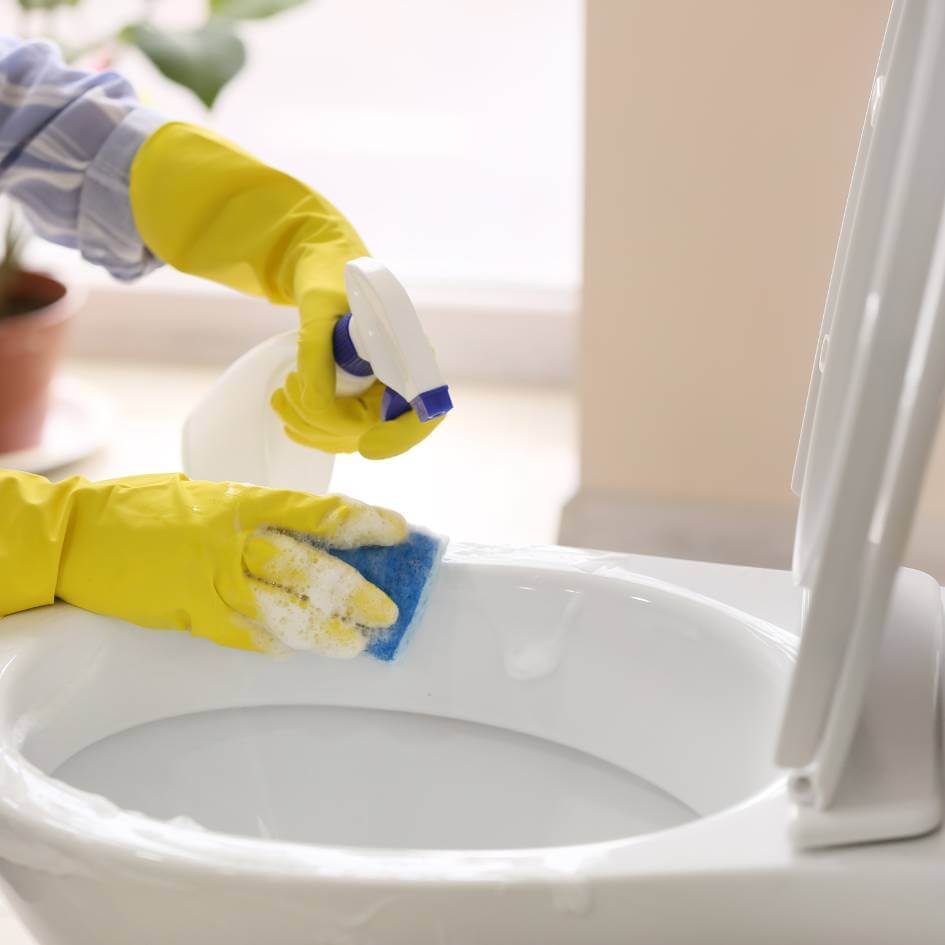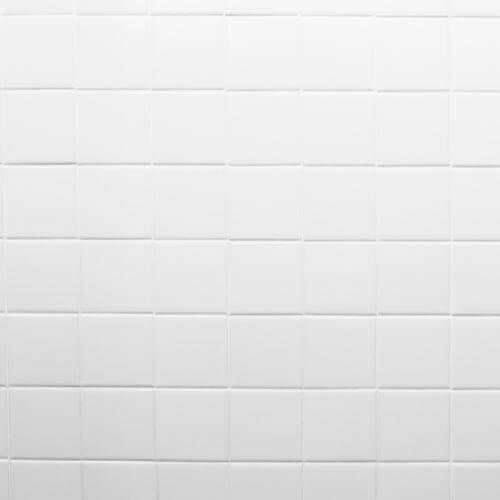Muriatic acid is a powerful and corrosive liquid made from hydrochloric acid, water, and other trace minerals. Hydrogen chloride gas from any of several procedures is dissolved in water to produce Muriatic Acid. It is a colorless or slightly yellowish liquid with a strong odor from impurities like iron.
The pH of muriatic acid ranges from 1 to 2. There is no set concentration for muriatic acid. It’s crucial to read the product label to determine the concentration. Acid with a concentration above 32 percent is hydrochloric acid, while 20 to 32 percent is muriatic acid.
However, 29 percent and 14.5 percent are the two most typical concentrations [1].
Muriatic Acid for Toilet Cleaning

Muriatic acid is not an average cleaning for toilets. Most people are, therefore, perplexed about whether they should use it. However, knowing what it is, what chemicals it includes, how to use it, and other information will help you get past the confusion.
The acid can undoubtedly aid in the removal of any persistent stains from your toilet. In addition, the acid is effective for rust, toilet bowl rings, and other unsightly stains resistant to conventional cleaning agents [2].
The nature of muriatic acid is corrosive. This indicates that it consumes anything it comes into contact with.
It can combine with other cleaning agents to create a poisonous gas that might be deadly if breathed in for any period. Moreover, the Centers for Disease Control and Prevention indicate that direct contact with muriatic acid results in chemical burns on the skin and severe eye and throat irritation and can even result in blindness if it gets in the eyes [3].
Long-term interaction of the acid with metals and other substances will cause pitting. Over time, this can cause pipes to develop holes, allowing acid-laced raw sewage to escape the drain and flow out somewhere else in the building.
How to use Muriatic Acid to clean toilet bowls
As noted above, using muriatic acid can be dangerous.
Therefore, safety is crucial when using acid in cleaning the toilet. Always adhere to the guidelines on the container, use the acid in small amounts, have the appropriate gear, including rubber gloves, mask, and safety glass, and keep the fan on.
Follow the following steps in cleaning your toilet:
- Preparation
Put on the safety gear; the mask, gloves, and safety goggles. Prepare a mixture of baking soda and water if you accidentally touch the acid. Mix half a quart of water and a little baking soda in a spray bottle. It is advisable to wear old clothing because acid might also harm your clothes.
- Dilute Muriatic Acid
It’s necessary to dilute muriatic acid in water. Muriatic acid shouldn’t be added to an empty container. Before adding the acid, add the right quantity of water to the container. Dilute in a ratio of 5:1; 5 cups of water and 1 cup of acid. Gently whisk the combination with a long-handled spoon.
Slowly pour the acid into the water to dilute it. Never mix acid with water since this will cause an exothermic reaction forcing the acid out of the bottle and onto you. Instead, use a glass or plastic container that can withstand acid.
As stated, you need to mix up the ratio of 5:1. However, you can adjust the dilution ratio according to the state of your toilet. A 2:1 ratio will give you a quicker and more effective cleaning experience if you want a strong cleaning experience.
- Apply the mixture
Pour some of the diluted acid into the clogged toilet. Check to see whether it produces bubbles. If it forms bubbles, it implies the combination reacts with the stains perfectly and progressively softens them. Give it 30 minutes to relax.
- Scrubbing
After 30 minutes, use a toilet brush to carefully scrub away the scale, tenacious stains, and thick deposits. Avoid using excessive force when scrubbing to avoid damaging your toilet bowl with muriatic acid or having the brush become stuck in the toilet.
Next, flush the toilet and observe the results. Finally, flush the toilet repeatedly to remove the extra cleaner.
Scrubbing and wiping in a circular path is one of the most effective approaches as it gets through all the dirt and grime.
The longer the diluted acid soaks, the less scrubbing is required. Never remove any deposits with a screwdriver, metal scraper, or other instruments. While it might take some time, the acid will complete the task.
How to use muriatic acid for clean tiles

Similarly, muriatic acid can eliminate grime and hard water buildups from bathroom tiles. Use the steps below to achieve good results and glossy bathroom floors and tiles [6];
- Prepare the surface
Clean out the recently accumulated dust and remove all of the hair that has accumulated around the drain area before you begin. Cleaning will be a little less messy, and you won’t have as much nasty, damp residue to deal with later.
- Dilute the Acid
As cleaning toilet bowls, mix 5 cups of water with 1 cup of acid. Consider the brand’s directions if you’re working with an industry-based acid. Check the precise acid-to-water ratio required because it may vary depending on the surface type.
- Apply the diluted acid
Always start with a small quantity to test the product. Don’t use too much at once. When used in large amounts in a closed space like your bathroom, the acid solution may act quickly or release highly acidic fumes.
Use a spray or a splash to wet the targeted tile area. Afterward, using a sponge or mop, apply the acid solution to the wet surface and gently scrub.
Next, apply water to the surface that has been cleaned before moving on to the next area. Repeat this procedure over the bathroom floor, ensuring the site is damp before applying the acid mixture layer.
- Scrubbing
Scrub in both the vertical and horizontal directions between the tiles and curbs to reach the cracks and joints where mold or other dark-looking fungi has taken hold
- Neutralize using baking soda
Stopping the acid reaction is a crucial step that protects the tiles. After cleaning, use water to rinse the acid combination from the bathroom floor thoroughly. The acid is harmful to you and the floor if left on the floor.
Due to the extreme acidity of this chemical solution, sometimes cleaning the floor is insufficient. You should use baking soda to dilute this strong substance.
Add one cup of baking soda to one bucket of warm water. Start the neutralization procedure by mopping the floor with the mixture. After a few minutes, leave it on for 24 hours before rinsing the floor with normal water.
Toilet Cleaner Acid Side Effects
Muriatic acid is a potent acid that can result in serious chemical burns if it touches your skin. Common domestic sources of muriatic acid include fertilizers, pool chemicals, and toilet cleaners. Hydrochloric acid also makes up most of the stomach acid, but a protective mucus shields the stomach’s interior from harm. [7]
One of the types of chemical burns most frequently treated is burns caused by muriatic acid. Chemical burns account for one-third of burn-related mortality, making up a tiny portion of all burns [8]
Read Next: Toilet Bubbles When Showering
Conclusion
You can purchase muriatic acid legally at the majority of home improvement stores. It is a choice that will aid in cleaning your toilet and has significant functions in business and as a cleaning agent.
There are several cleaning products available, many of which are all-natural. For example, when cleaning toilet buildup, great alternatives include vinegar, baking soda, citric acid, and a pumice stone that won’t harm the environment when flushed.
Use muriatic acid responsibly if you absolutely must. Wear gloves, a mask, and safety glasses, and use a small amount. Observe the instructions precisely. Make sure the fan in the bathroom is on.
Never forget to read the label completely before using the substance and to store it in a dark, cool area out of children’s reach. For guidance on safely disposing of muriatic acid in your area, get in touch with your area recycling facility.

Michael Davis is a heating & plumbing expert who currently works as independent contractor in SC. He also writes for Plumbertip.
For almost 10 years he worked on various plumbing tasks across South Carolina.



